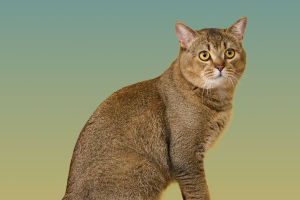The Chinstrap penguin, with its distinctive black band under its beak, is one of the most recognizable and charming residents of the Antarctic region. Known for its playful behavior and striking appearance.
This species of penguin offers a glimpse into the vibrant wildlife of one of the coldest places on Earth.
Identification and Appearance
The Chinstrap penguin (Pygoscelis antarcticus) is named for the narrow, black band that runs across its white cheeks, resembling a chinstrap. This characteristic makes it easily identifiable among the penguin species. Here’s a closer look at its features:
1. Size and Build: Chinstrap penguins are medium-sized penguins, standing about 68-76 cm (27-30 inches) tall and weighing between 3-5 kg (6.6-11 lbs). They have a sleek, streamlined body that aids in their excellent swimming abilities.
2. Plumage: Their distinctive plumage includes a black head and back, with a white belly. The chinstrap band, a narrow line of black feathers, adds to their unique appearance.
3. Bill: The penguin’s bill is pointed and slightly hooked, suited for their diet of fish and krill.
Habitat and Distribution
Chinstrap penguins are primarily found in the sub-Antarctic and Antarctic regions. Their preferred habitats include rocky, ice-free islands and coastal areas. Here’s where you can find them:
1. Antarctic Peninsula: This is the primary breeding ground for Chinstrap penguins. They establish large colonies on the rocky shores and ice-free areas.
2. Sub-Antarctic Islands: They also inhabit islands such as South Georgia, the South Sandwich Islands, and the Kinnes Cove.
3. Adaptations: Their habitat is characterized by extreme cold, ice, and harsh weather conditions. Chinstrap penguins are well-adapted to these environments with their thick layers of blubber and dense feathers for insulation.
Behavior and Diet
Chinstrap penguins are known for their lively and active nature. Here’s an insight into their behavior and diet:
1. Social Structure: These penguins are highly social birds, forming large colonies that can number in the thousands. Their colonies are noisy, with a cacophony of calls and interactions.
2. Feeding Habits: Their diet primarily consists of small fish, krill, and other marine invertebrates. They are adept hunters, diving into the icy waters to catch their prey.
3. Breeding: Chinstrap penguins breed in large colonies, where they build nests from pebbles and other materials. The female lays two eggs, which both parents take turns incubating. The chicks are fed regurgitated food by their parents.
Conservation Status
The Chinstrap penguin is currently classified as “Least Concern” by the International Union for Conservation of Nature (IUCN). However, they face several challenges:
1. Climate Change: Melting ice and changing sea temperatures can impact their habitat and food sources.
2. Human Activity: Increased tourism and pollution in their breeding areas pose potential threats.
3. Research and Monitoring: Ongoing research and conservation efforts are crucial to ensuring the long-term survival of these fascinating birds.
The Chinstrap penguin is a captivating species that embodies the rugged and resilient spirit of Antarctic wildlife. With their striking appearance, lively behavior, and adaptability to harsh environments, they offer a unique glimpse into the world of one of the most remote regions on Earth. By understanding and protecting these remarkable birds, we ensure that future generations can continue to marvel at their beauty and resilience.
Chinstrap Penguin facts: they wear HELMETS 🐧 Animal Fact Files
Video By Animal Fact Files


